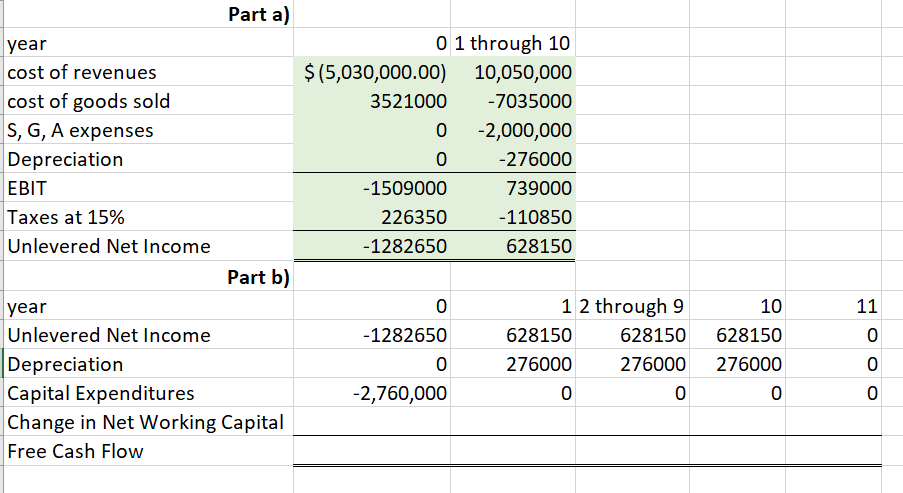Question
Billingham Packaging is considering expanding its production capacity by purchasing a new machine, the XC-750. The cost of the XC-750 is $2.76 million. Unfortunately, installing
Billingham Packaging is considering expanding its production capacity by purchasing a new machine, the XC-750. The cost of the XC-750 is $2.76 million. Unfortunately, installing this machine will take several months and will partially disrupt production. The firm has just completed a $49,000 feasibility study to analyze the decision to buy the XC-750, resulting in the following estimates: Marketing: Once the XC-750 is operating next year, the extra capacity is expected to generate $10.05 million per year in additional sales, which will continue for the ten-year life of the machine. Operations: The disruption caused by the installation will decrease sales by $5.03 million this year. As with Billingham's existing products, the cost of goods for the products produced by the XC-750 is expected to be 70% of their sale price. The increased production will also require increased inventory on hand of $1.08 million during the life of the project. The increased production will require additional inventory of $1.08 million, to be added in year 0 and depleted in year 10. Human Resources: The expansion will require additional sales and administrative personnel at a cost of $2 million per year. Accounting: The XC-750 will be depreciated via the straight-line method in years 1-10. Receivables are expected to be 15% of revenues and payables to be 10% of the cost of goods sold. Billingham's marginal corporate tax rate is 15%. a. Determine the incremental earnings from the purchase of the XC-750 b. Determine the free cash flow from the purchase of the XC-750 c. If the appropriate cost of capital for the expansion is 10.1%, compute the NPV of the purchase. d. While the expected new sales will be $10.05 million per year from the expansion, estimates range from $8 million to $12.1 million. What is the NPV in the worst case? In the best case? e. What is the break-even level of new sales from the expansion? What is the break-even level for the cost of goods sold as a percentage of sales? f. Billingham could instead purchase the XC-900, which offers even greater capacity. The cost of the XC-900 is $4.02 million. The extra capacity would not be useful in the first two years of operation, but would allow for additional sales in years 3-10. What level of additional sales (above the $10.05 million expected for the XC-750) per year in those years would justify purchasing the larger machine?
Have the info below but am stuck on how to calculate change in net working capital
 \begin{tabular}{|c|c|c|c|c|c|} \hline \multicolumn{6}{|c|}{ Part a) } \\ \hline year & \multicolumn{2}{|c|}{01 through 10} & & & \\ \hline cost of revenues & $(5,030,000.00) & 10,050,000 & & & \\ \hline cost of goods sold & 3521000 & -7035000 & & & \\ \hline S, G, A expenses & 0 & 2,000,000 & & & \\ \hline Depreciation & 0 & -276000 & & & \\ \hline EBIT & -1509000 & 739000 & & & \\ \hline Taxes at 15% & 226350 & -110850 & & & \\ \hline Unlevered Net Income & -1282650 & 628150 & & & \\ \hline \multicolumn{6}{|c|}{ Part b) } \\ \hline year & 0 & \multicolumn{2}{|r|}{12 through 9} & 10 & 11 \\ \hline Unlevered Net Income & -1282650 & 628150 & 628150 & 628150 & 0 \\ \hline Depreciation & 0 & 276000 & 276000 & 276000 & 0 \\ \hline Capital Expenditures & 2,760,000 & 0 & 0 & 0 & 0 \\ \hline \multicolumn{6}{|c|}{ Change in Net Working Capital } \\ \hline Free Cash Flow & & & & & \\ \hline \end{tabular}
\begin{tabular}{|c|c|c|c|c|c|} \hline \multicolumn{6}{|c|}{ Part a) } \\ \hline year & \multicolumn{2}{|c|}{01 through 10} & & & \\ \hline cost of revenues & $(5,030,000.00) & 10,050,000 & & & \\ \hline cost of goods sold & 3521000 & -7035000 & & & \\ \hline S, G, A expenses & 0 & 2,000,000 & & & \\ \hline Depreciation & 0 & -276000 & & & \\ \hline EBIT & -1509000 & 739000 & & & \\ \hline Taxes at 15% & 226350 & -110850 & & & \\ \hline Unlevered Net Income & -1282650 & 628150 & & & \\ \hline \multicolumn{6}{|c|}{ Part b) } \\ \hline year & 0 & \multicolumn{2}{|r|}{12 through 9} & 10 & 11 \\ \hline Unlevered Net Income & -1282650 & 628150 & 628150 & 628150 & 0 \\ \hline Depreciation & 0 & 276000 & 276000 & 276000 & 0 \\ \hline Capital Expenditures & 2,760,000 & 0 & 0 & 0 & 0 \\ \hline \multicolumn{6}{|c|}{ Change in Net Working Capital } \\ \hline Free Cash Flow & & & & & \\ \hline \end{tabular} Step by Step Solution
There are 3 Steps involved in it
Step: 1

Get Instant Access to Expert-Tailored Solutions
See step-by-step solutions with expert insights and AI powered tools for academic success
Step: 2

Step: 3

Ace Your Homework with AI
Get the answers you need in no time with our AI-driven, step-by-step assistance
Get Started


